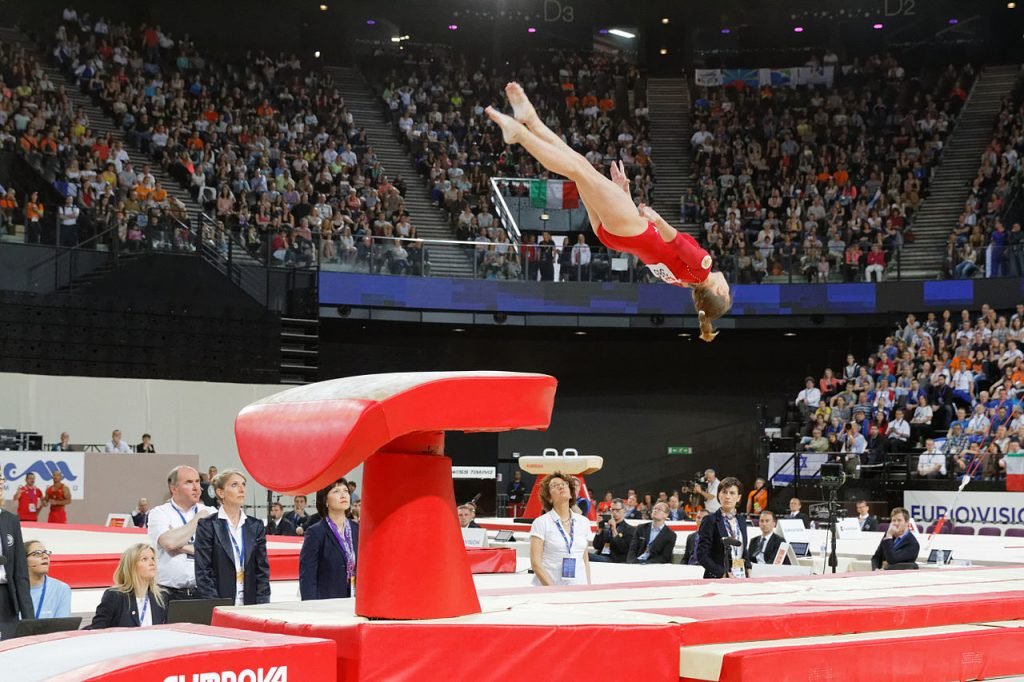AP Psychology Study Resource: Social Facilitation
Social facilitation is the theory that explores how someone’s performance can be improved when others are present.
This theory helps us understand our motivation in front of an audience. We get to say when we’re doing tasks, the more effective and successful we become.
For example, as we’ll find out, cyclists who are competing with others are more likely to perform better than if they’re just racing against the clock.
This also explains how mistakes mean more when people are asked to do unfamiliar tasks in the presence of competitors or an audience. Moreover, this becomes known as social inhibition.
Furthermore, on a driving test with an instructor, an individual gets more prone to errors and being over cautious due to self-doubt and/or nervousness.
Below, we’ll explore how this theory came about. We also learn how it evolved over the years.
The Definition of Social Facilitation

Studies surrounding this theory explore the extent of a person’s behavior. Notwithstanding if the act appears affected by the implied, imagined, or real presence of others.
It occurs when we perform better in a simple task while others get to watch you. However, people less expect for a complex task.
For example, this appears visible once your boss asks you to tidy up the meeting room. This theory suggests that you willfully go an extra mile to ensure tardiness and orderliness.
On the other hand, if you stayed for this task out of hours (when everyone else has left work for the day), the same level of attentiveness happens not to take place.
Yet, if the tasks get more challenging, e.g. decorating the meeting room while people see you, you definitely feel more pressure to do this task making you commit mistakes.
The Origins of Social Facilitation

Norman Triplett created one of the first experiments into this theory in 1898.
He conducted research on cyclists’ speed records. Notably, he noticed that once the racing happens against each other rather than a timer, their speed increases. To emphasize his findings, he conducted further tests under laboratory conditions.
This involved getting children to use fishing reels.
The two conditions held a child working alone and children working in pairs. The tasks concerns winding up a certain length of fishing line.
Triplett reported that the work gets faster as soon as they partnered with someone else doing the same task.
This demonstrates the co-action effect.
Co-Action Effect

This phenomenon occurs when someone’s task performance increases. Conclusively, the presence of others doing the same thing affects the mere performance.
For example, relating to this reading material gets easier in a library environment than you do at home, even though the place appears quiet.
Other studies explore the co-action effect through the effort of Chen (1937). When working alongside other ants to dig sand, an ant digs three times as much compared if they do it on their own.
Likewise, Platt, Yaksh, and Darby (1967) discovered that an animal eats more food if there exist other animals (from their same species) there while eating.
Audience Effect

Social facilitation doesn’t just occur when someone gets co-acting with someone. But, this occurs also when there’s a passive audience/spectator present. Psychologists coin this as the audience effect.
In 1935, Dashiell found that subjects’ multiplication performances increased by the presence of an audience. This happens provided by increasing how many simple multiplications carried out. In 1925, Travis discovered that well-trained subjects perform better at a psychomotor test in front of spectators.
But in 1933, Pessin found the opposite of this. He reveals that subjects required fewer trials to learn a list of gibberish words in front of an audience while they work on their own.
What does this mean?
That social facilitation appears dependent on the nature of the interaction between the performer and task. In some cases, an audience or co-stars help boost the performance quality. As for others, their quality gets impaired.
Thus, according to Cottrell (1968), this theory concerns not all about the presence of people but rather the apprehension of being judged by them. Being aware of others’ evaluations leads to our approval or disapproval. So, by being in the presence of others we get driven by evaluation anxiety.
Developing the Theory
As well as the aforementioned studies, Robert Zajonc happened also hugely responsible for piecing together the concept of this theory.
In 1956, he carried out studies to try and understand why some performed better or worse when in the presence of others. These experiments define two parts – simple or complex tasks in front of an audience.
His results denoted pretty clear-cut.
When people gain a lot of practice and performing a simple task, they performed better than those who perform more complex tasks. Nonetheless, these people obtain little practice at and some tasks appear unfamiliar.
This spawned the idea of “social inhibition.”
The Activation Theory
In 1956, the generalized drive hypothesis proposed by Zajonc became the backbone of activation theory. Also, this appears why you hear activation theory refers to as the Zajonc theory.
This gets the first theory to address both the decrease and increase in people’s performances in front of others.
Zajonc claimed that an organism’s arousal seems heightened when in the presence of others. This increases how well they perform their well-learned/habitual tasks. In contrast, this heightened awareness becomes an impairment when carrying out unfamiliar/more complex tasks.
He based this theory on Yerkes-Dodson’s Law, which stipulates that when it comes to performance levels these work like an inverse “U” function. This means that for easier tasks, we obtain a higher optimal drive level. For complex tasks, this gets lower.
To expand on this, there appears a number of different activation theories:
Alertness Hypothesis
In this theory, a performer occurs not aware of the actions of competitors or observers. This enables them to perform better as it heightens their alertness.
Monitoring Hypothesis
In this theory, social facilitation doesn’t occur because the performer gets familiar with how their audience/observer responds. This means the performer isn’t able to perform as well as they feel more pressure.
Challenge and Threat Hypothesis
This theory expands on the idea that people are better able to perform simple tasks in front of an audience. Yet, this turns out less once they perform complex tasks in front of others. Mainly, this comes from the cardiovascular response to the activity.
When doing a simple exercise in front of people, the performer’s cardiovascular response gets normal. Indeed, this aids their performance. Hitherto, on complex tasks, this induces a cardiovascular response similar as to being placed under threat. Certainly, this negatively impacts the performance.
Why Is It Important to Understand this Theory?

By familiarizing yourself with this idea, it helps you gain a new perspective on motivation.
Why?
Because we often interpret how well someone performs based on their abilities.
For example, this gets visible when someone does a given a task and fails to perform it well. Probably, this gets potentially assumed that there comes the unwillingness to put the required effort.
While that could be the case, social facilitation allows us to appreciate that how motivated we are toward a task. This comes dependent on whether others seem to evaluate us and how good we think we become at that particular task.
When we perform something easy and others observe, our motivation arrive high. This means we likely to get more positive feedback. However, when we start to worry about making mistakes, we surely receive negative comments from our spectators.
How can you use this concept effectively?

By assigning tasks that not only match the participants’ skills but will also be observed by others.
For example, Sarah’s teacher has asked her to do a 3-minute presentation on her chosen topic. When speaking in front of a group of people, Sarah is confident. This means that she’s highly motivated to do this task. This gets possible since it denoted relatively straightforward for her.
Nonetheless, Sam is incredibly shy. So while he may benefit from learning to speak in front of others, his motivation levels are low. This comes from the fact that the task appears difficult for him. Therefore, he thinks he’ll perform poorly and get negative comments from his classmates.
Putting It into Practice
Overall, it’s clear that social facilitation enables us to understand how those around us are behaving in different surroundings.
This depends on the level of distractions, the task at hand, and the awareness of evaluation. This appears similar to the level of arousal in the subject and the subjects’ perspective on the task. Whether it seems easy or difficult for you or me, this can be understood in detail by applying these theories.
Featured Image: CC by 2.0, Split the Kipper, via Flickr


